The foundation of every horse’s diet must be forage, which is most commonly provided in the form of either hay or pasture grass. While forage contains a certain amount of energy, protein and vitamins on its own, its fiber content also feeds the microorganisms in the horse’s large intestine, which break the forage down into more vitamins, protein and energy that the horse can use.
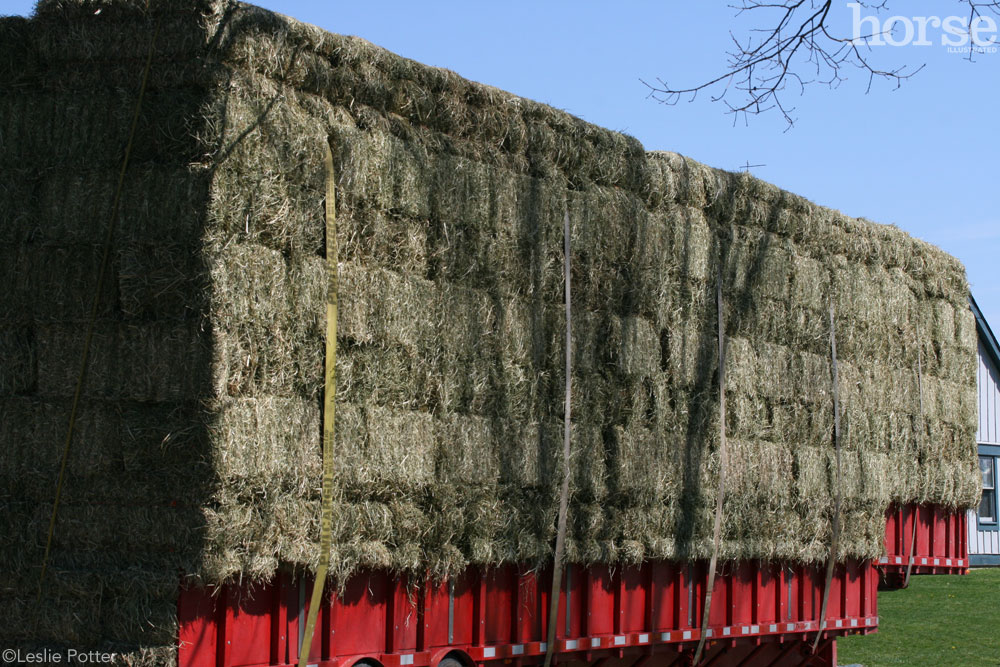
Types of Hay
Hay is defined as pasture plants that have been cut, dried to less than 20 percent moisture content, and baled. There are three types of plants used to make hay: grass, legumes and cereals.
Grass hay is commonly made from timothy, fescue, bluegrass, orchard grass, Bermuda grass or brome grass. These hays contain around 10 percent protein, perfect for the average adult horse. If feeding grass hay, keep in mind that horses tend to prefer “stalky” grass over soft grasses, so timothy and orchard grass are good choices. Fescue hay (or pasture grass) should never be fed to pregnant mares because an endophyte (fungus) that grows in this grass can cause pregnancy complications and abortion.
Common legumes used to make hay include alfalfa and clover. Legume hay has a much higher protein content and caloric value, whereas grass hay is higher in fiber. If you must feed your horse alfalfa due to a lack of grass hay in your area, be aware that mature horses in light work can often gain excessive weight and be at risk of obesity and its related health concerns. Alfalfa is a better choice for lactating mares or those in late pregnancy, as well as young horses that are growing quickly.
Alfalfa also has a high calcium content—a further benefit for young, growing horses—but is proportionately low in phosphorus. Young horses need both nutrients to grow strong bones, so make sure you are feeding a balanced ration.
Although the high protein content of alfalfa (about 18 percent) is much more than adult, non-pregnant, non-lactating horses need, it is not harmful. Excess protein is excreted in the urine, which mainly just makes stall cleaning more unpleasant due to a concentrated ammonia odor.
Cereal hays are least commonly fed to horses. These include oat, barley and wheat hay. When the cereal grains are fully mature and the grain heads fall off or are harvested, the remaining product is basically straw, which is not as palatable to horses as other types of hay. The nutritional value of these hays depends on how many grain heads remain. Feeding cereal hays as the only source of roughage will usually require a vitamin and mineral supplement.
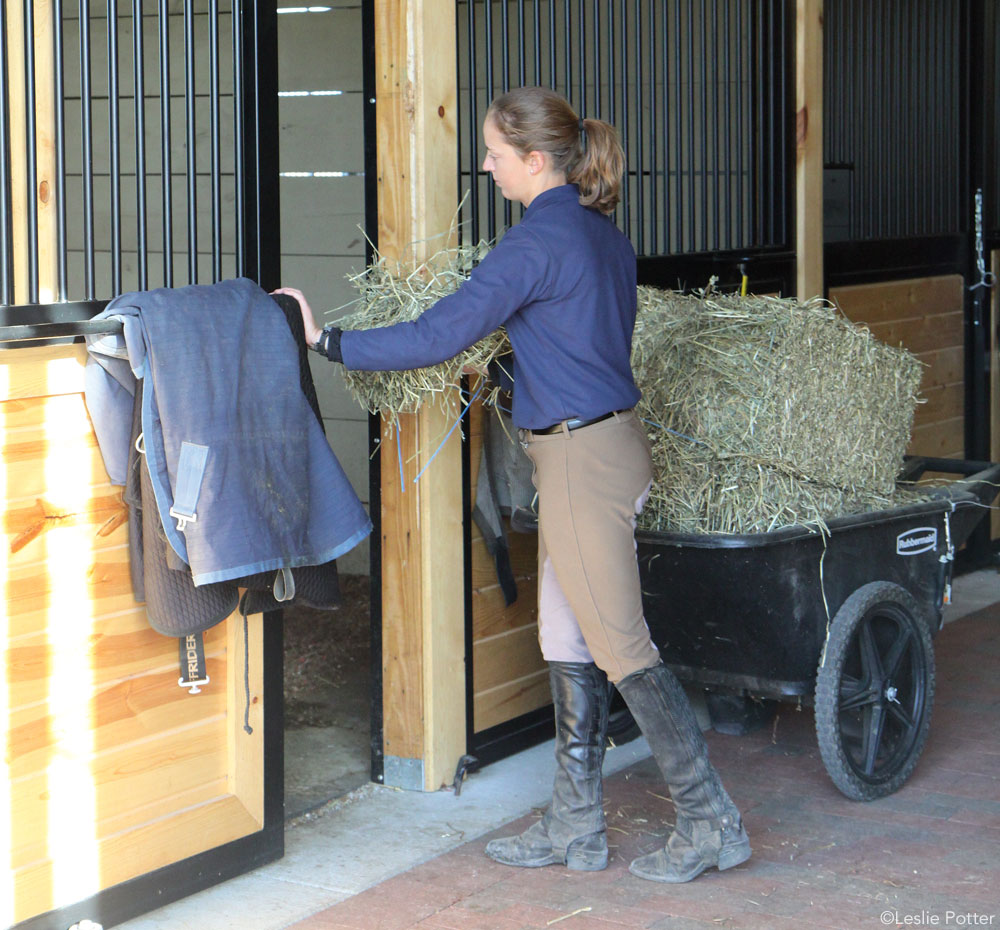
Hay Quality
Always feed your horse the highest-quality hay possible. It goes without saying that hay should be free of trash, dead animals or lots of weeds. Beyond that, making good hay is something of an art form that requires the plants to be cut at just the right time pre-bloom (before flowers form). Hay that is cut too late—after the plants have gone to seed—will be mostly tough stems, which horses find undesirable, and is less nutritious. Plants cut too early in their maturity cycle, while extremely nutritious, have a high moisture content and are difficult to dry; as hay, they tend to crumble easily and create more dust.
If it rains after cutting and before baling, some nutrients will be leached out while the hay dries again, resulting in a lower-quality hay. Hay that takes too long to dry can develop mold, which causes respiratory and other health problems in horses.
The nutrients in hay (calories, protein, vitamins and minerals) vary widely. If you want to make sure your horse is getting a balanced diet, you can have the hay tested by a commercial lab or county extension office to determine any areas that may need to be supplemented.
Evaluate hay quality with your nose first: It should smell fresh, not musty. Avoid hays that are dark brown or have obvious patches of white mold. Hay bales may turn brown around the edges from exposure to air, but once you break open the bale, it should be somewhere between green and golden. Hay should not feel hot to the touch, another sign of mold.
Hay should easily break apart into flakes; if it seems “glued together,” this is also a sign of mold. It is always worth discarding bad bales for the sake of your horse’s health. High-quality hay may cost more, but it will keep your horse healthier and in better weight.
Legume hay is more prone to molding than grass hay, so be especially vigilant in inspecting it for quality. Also be on the lookout for blister beetles when feeding alfalfa hay. These insects produce a toxin called cantharidin that can quickly cause blisters and irritate the horse’s mouth, stomach and intestines. If enough beetles are consumed, death can follow within hours. The beetles are found in most parts of the United States, and are 1/2 to 1 inch long and cylindrical in shape. Adult beetles sometimes feed on leaves and flowers of legume grasses and may be crushed up during baling, so check a sample bale very carefully before purchasing a load of alfalfa. You can also ask your hay supplier if they spray for blister beetles.
Storage
Hay should be stored only when it’s completely dried; storing damp hay can result in mold, heat and spontaneous combustion. Hay should never be left uncovered from the elements, as rain and dew will make it moist and moldy. If you do not have a building for storing hay, at the very least, secure tarps over the top of it.
Hay should always be stored up off the ground on wooden pallets. (You can usually get these for free at bulk discounter stores or home repair stores.) Air circulation is needed under the bales to keep them from “sweating” and causing the bottom bales to become moldy and unusable.
Although older barns are set up to store hay in lofts above the stalls, this is not ideal. In addition to the fire hazard created by so much kindling and the possibility of a moldy bale spontaneously igniting, hay creates a good deal of dust, which is bad for a horse’s lungs.
For the health and safety of your horse, it’s worthwhile to build a hay storage shed a significant distance from the barn. The shed should be well-ventilated and have a leak-free roof, as well as pallets on the floor. It should also be in a location that makes delivery by large truck easy. Having a storage shed will also keep your horse safe, as fresh hay continues to dry and cure, which is a recipe for possible combustion.
You can order hay in bulk straight off the farmer’s field to save money by avoiding the middleman. This discount can be as much as 20 percent. The best time to do this is throughout the summer, when hay is being harvested. If you’re buying hay to last you the whole winter (or year, if you live somewhere without pasture), calculate enough for a half to full bale per day for each horse, assuming 50-pound bales of grass hay and 1,000- to 1,200-pound horses. This is a maintenance ration for adult horses in light or no work.
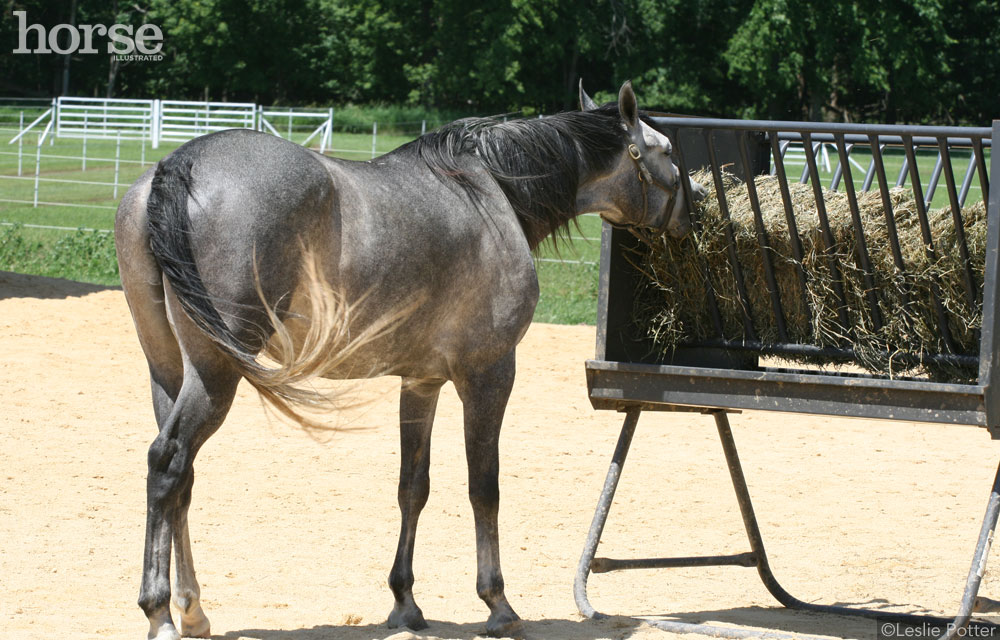
Round Bales
Round bales are convenient for properties that have a lot of horses to feed, although they require an extra tractor implement to move them around. They should be placed in specially designed round bale feeders to keep them from coming into contact with wet ground and rotting or molding more quickly. Even when a feeder is used, round bales should only be fed if they can be consumed in five to 10 days; any longer than that and they will begin to rot and become unhealthy for horses to eat.
Dead animals that may have been caught up in the hay during the baling process can carry toxic botulism, and since you’re more likely to miss them in round bales than in small square ones, your vet may recommend vaccinating your horse for botulism if you feed round bales. Also check round bales daily for baling twine or other hazards that might be deep within the bale and come to the surface as horses work their way through it.
Soaking
Horses with dust and mold allergies and/or other respiratory problems should eat hay that has been soaked. Even just a brief dunk of the hay using a hay net in an unused trash barrel or muck tub filled with water significantly reduces dust particles and airborne spores. Some prefer to soak hay for many hours, but this leaches out soluble nutrients.
An alternative to soaking is to use a hay steamer. Although these are quite expensive, they reduce dust without leaching nutrients, and have the added benefit of heating and killing bacteria
and spores.
Hay Alternatives
Beet pulp, a byproduct of the sugar beet processing industry, is a commonly fed supplemental fiber source for horses. Once the sugar is extracted, the remaining fiber is highly digestible, and sold as shreds or pellets.
Most people opt to soak beet pulp before feeding, and this is especially important to prevent choke if feeding the pellets. Soak beet pulp for three to four hours for maximum benefit, but throw away any leftovers within a day, as it will start to spoil quickly. Beet pulp contains roughly 10 percent protein, similar to grass hay. It is also a popular ingredient in complete feeds and senior feeds, which take the place of both hay and grain. It is not balanced in terms of mineral content, however, and contains almost no vitamins, so plain beet pulp should not account for more than half of the horse’s dietary roughage.
Silage is bagged, chopped forage with a higher moisture content than hay; it is sealed to keep out oxygen and prevent spoilage. Silage is commonly fed to horses in Europe because of the wetter climate that makes it harder to produce good hay. Haylage and Chaffhaye are two brand-name silages that are available in small-sized bags.
Alfalfa cubes are another alternative to baled hay and are commonly fed in the United States. They should be soaked for 15 minutes or so to make them easier to eat and prevent choke. They are rich in calories and protein but have less long-stem matter to satisfy the horse’s chewing urge. This means the horse will consume his ration quickly and without much satisfaction, leaving him bored until his next meal, which can increase vices such as stall walking, weaving, wood chewing and cribbing.
Pelleted hay is an option for horses with dust allergies or for drought years and other circumstances when hay is scarce. These should always be soaked to prevent choke and are not ideal as a sole source of roughage because of their lack of long-stem fiber, similar to alfalfa cubes.
Complete feeds and some senior feeds are an “all-inclusive” diet that contain all of the nutrients a horse needs. However, since they don’t include long-stem fiber to chew on, this should not be the only thing you feed a healthy adult horse. They’re best as a treat to mix with supplements, or for older horses that have lost teeth and therefore can’t chew long-stem fiber.
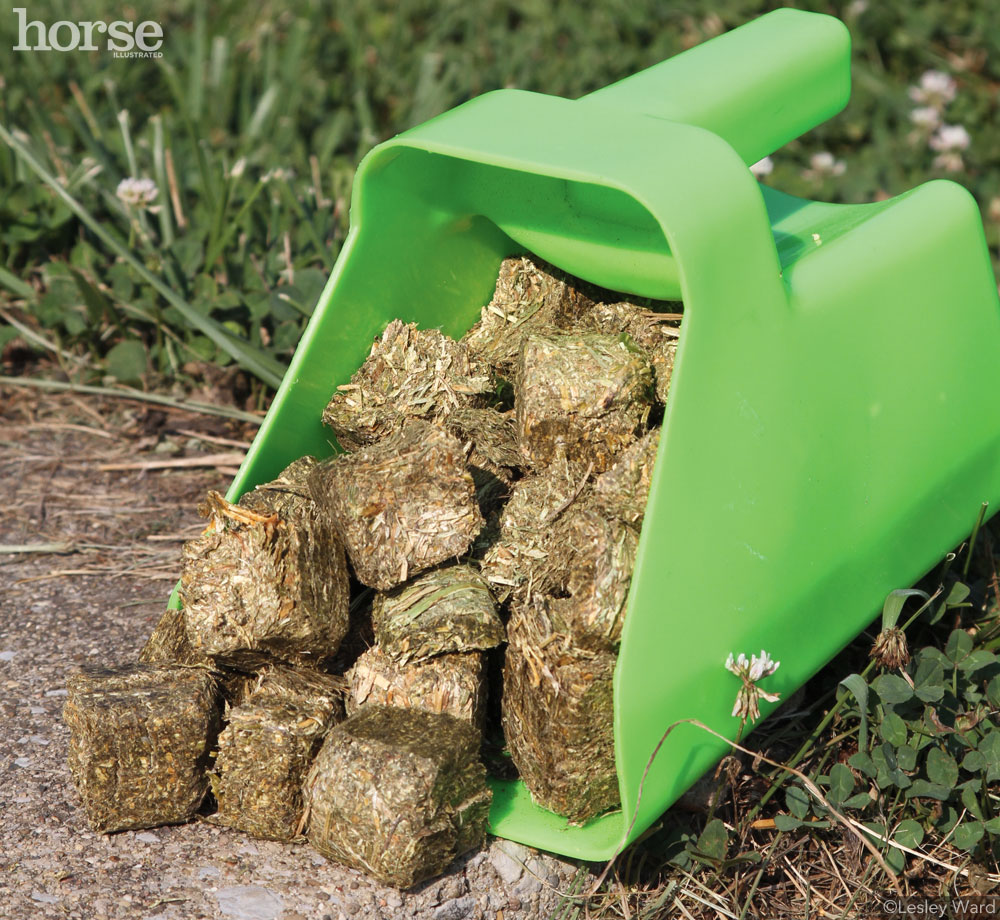
Supplementation
Most mature horses that are fed enough high-quality grass hay do not need supplementary concentrate feed (grain) to maintain a healthy weight unless they are in heavy work. Talk to an equine nutritionist or your vet whenever you have questions about your horse’s dietary needs. Always provide unlimited clean water and a salt block, since hay is deficient in sodium.
While the mineral content of hay varies depending on where it was grown, most hay contains sufficient minerals to avoid deficiency, and a trace-mineral salt block provides extra if you are concerned.
Fresh green pasture grass contains all of the vitamins a horse needs, but as soon as it is cut and baled to form hay, it starts to lose some vitamin A and E. By providing a concentrate feed commercially formulated for horses, you can be sure there will be supplemental vitamins and minerals in the levels a horse needs. If your horse gets too excitable or gains too much weight when he eats grain, you can offer him ration balancer pellets. These contain the same supplemental vitamins and minerals as commercial concentrates without all the calories.
The hay you choose will ultimately depend on what is available, good quality and reasonably affordable in your area. Talk to an equine nutritionist at a feed company or local agriculture extension office if you need more regional guidance. If your horse has a specific health problem, your vet can help recommend a feeding plan that will keep him feeling his best.
Further Reading
All About Hay
Hay Buying without the Hassle
Hay Buying: Cost Calculator
Holly Werner Caccamise is Managing Editor of Horse Illustrated and has an M.S. in Animal Science with a specialization in equine nutrition.
This article originally appeared in the 2012 issue of Horses USA.

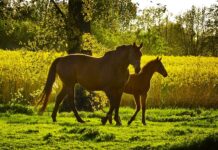

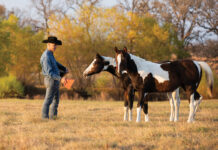

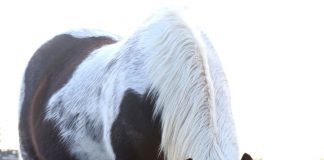

Excellent well written article. Thank you!